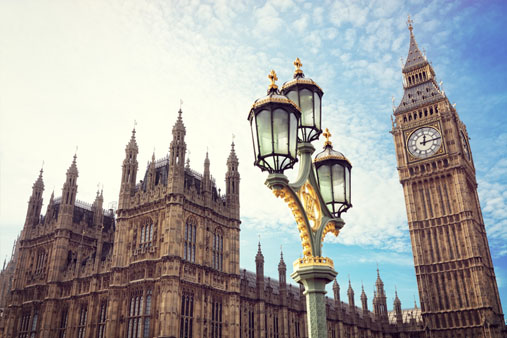UK GROWTH BOOSTED BY STOCKPIILNG |
 The UK economy benefited from a sharp one-off boost to growth in the first quarter of the year as manufacturers stockpiled ahead of a Brexit that never came. The UK economy benefited from a sharp one-off boost to growth in the first quarter of the year as manufacturers stockpiled ahead of a Brexit that never came.
Data released by the Office for National Statistics (ONS) revealed that gross domestic product (GDP) rose by 0.5% during the first three months of 2019; this compares with a growth rate of 0.2% in the final quarter of last year. While this clearly represents a strong rebound in growth, the ONS cautioned that the rise was driven by stockpiling as manufacturers rushed to deliver orders before the original 29 March Brexit deadline. Indeed, the data revealed that manufacturing output jumped by 2.2% in the first quarter, the fastest rate of growth recorded in the last 20 years. This sharp expansion was not a surprise as business surveys had previously revealed how manufacturers had been building up stocks of goods in case the UK left the EU without a transition deal, which it was feared could result in chaos at the UK’s borders. However, the fact that many businesses did bring activity forward in preparation for Brexit does mean that stocks of finished goods now stand at historically high levels. Stock levels are therefore likely to be run down over the coming months and data from the latest monthly Confederation of British Industry (CBI) Industrial Trends Survey suggests that this process has already begun. The CBI survey showed that the monthly order book balance fell to -10 in May from -5 in April, its lowest level since October 2016. This suggests that British factories have geared down from their rush to stockpile before the Brexit deadline, a move that will inevitably have a negative impact on UK economic growth during the second quarter of the year. |
| Back to top |
CBI WARNING OVER NO-DEAL BREXIT |
 The CBI has warned potential Tory leadership candidates about the consequence of a no-deal Brexit, as the Prime Minister’s announcement of her imminent departure has effectively put the Brexit process on hold until a new leader is elected. The CBI has warned potential Tory leadership candidates about the consequence of a no-deal Brexit, as the Prime Minister’s announcement of her imminent departure has effectively put the Brexit process on hold until a new leader is elected.
On 24 May, Theresa May announced that she would be stepping down as the Conservative party leader on 7 June. In an emotional statement, the Prime Minister said she had done her best to deliver Brexit and expressed her ‘deep regret’ about being unable to do so. The Tory party is now expected to elect a new leader, and the country’s next Prime Minister, by the end of July. And the person who is ultimately elected will clearly have a huge impact on how the Brexit process proceeds and is eventually concluded. However, Mrs May’s decision to stand aside would appear to have increased the possibility of both a no-deal Brexit and Brexit not occurring at all. This is because the Prime Minister’s Brexit plan negotiated with the EU now appears to be in tatters, leaving no vehicle for exiting the EU and a default position of departure on 31 October. While the next Prime Minister may be able to negotiate an improved deal, the EU have consistently stated that they have limited appetite for change to the current deal and securing any further concessions will certainly not be easy. This leaves the prospect of a no-deal departure or a sufficient proportion of MPs uniting behind a second referendum. Meanwhile, the CBI has issued a warning to Conservative leadership candidates who are actively supporting a no-deal Brexit. The business organisation’s director general Carolyn Fairbairn has said that a no-deal Brexit should not even be considered and suggested that such a policy “is not a responsible strategy for a government to have“. |
| Back to top |
MARKETS:
|
||||||||||||||||||||||||||||||||
| Geopolitical tensions increased in May, as did concerns over the strength of global growth. Trade tensions intensified between the US and China, and later in the month between the US and Mexico, as President Trump announced plans to impose a 5% tariff on all Mexican imports from 10 June. The President is threatening a further increase to 25% by October if Mexico fails to reduce the stream of migrants to the US. There are concerns that the unexpected tariffs could send the US into recession, as Mexico is their largest trading partner.
Global markets were largely negative in May and experienced an unsettled end of the month in response to threats from China and the US. As China prepares a sweeping blacklist of foreign firms following the Huawei ban, Chinese economic data was also in focus, as manufacturing activity slipped into contraction in May. Major Asian indices were affected at the end of the month following the weaker than expected data, as trade relations negatively influence China’s economy. Major indices in the US and EU moved lower at the end of the month after President Trump’s new rounds of tariffs stoked recession fears. On the continent, German data attracted attention as unemployment increased for the first time in five years and manufacturing contracted. US manufacturing data was also close to contraction. On the foreign exchanges, sterling closed the month at $1.26 against the US dollar. The euro closed at €1.13 against sterling and at $1.11 against the US dollar. Investors favoured safe haven assets, including gold, which broke through resistance at $1,286 as it headed through $1,300, to close the month up 1.66% on $1,305.24. Brent crude fell in the month amid trade tensions, to close at $61.69 a barrel, down over 15%.
|
| Back to top |
INFLATION RISES TO YEAR HIGH |
| Rising energy prices have pushed the headline rate of inflation up to its highest level this year, although the increase was less than both the Bank of England (BoE) and economists had been predicting.
Data from the ONS shows that the Consumer Prices Index 12-month rate – which compares prices in the current month with the same month a year earlier – rose to 2.1% in April. This was up from 1.9% in the previous month and is the highest figure reported so far this year. A hike in energy bills as a result of Ofgem’s decision to raise its price cap was the biggest upward contributor to April’s figure, while rising airfares, which were influenced by the timing of Easter, also had an upward impact. These increases, however, were partially offset by a downward contribution from some recreational and cultural items, particularly computer games and package holidays. Although the latest data has seen the rate of inflation edge just above the BoE’s 2% target, the figure was actually slightly lower than economists had been expecting. Indeed, the consensus figure in a Reuters poll had been 2.2%, a similar figure to the BoE’s prediction. The inflation statistics also suggest there is less short-term pressure in the consumer prices pipeline than economists had feared. Manufacturers’ costs for raw materials were 3.8% higher in April 2019 compared to year earlier levels, significantly below the 4.5% consensus forecast. After last month’s Monetary Policy Committee meeting, the BoE said it was expecting growth and inflation to pick up over the next two years and that interest rate increases could therefore be ‘more frequent’ than markets had been anticipating. While economists still expect inflation to drift higher in the coming months, this latest set of statistics suggests the immediate outlook remains relatively subdued. |
| Back to top |
WAGE GROWTH SHOWS SIGNS OF EASING |
| Although the latest set of employment statistics once again shows that the UK labour market remains in a relatively robust state of health, the data did suggest that the recent growth in wages may have stalled.
According to data from the Labour Force Survey, the unemployment rate fell to 3.8% in the January to March period. This was the lowest reported figure since the three months from November 1974 to January 1975. However, despite this drop in the unemployment rate, the data also revealed a slowdown in wage growth. Indeed, average weekly earnings including bonuses were reported to have risen by an annual rate of 3.2% in the three months to March, down from 3.5% in the previous three-month period. In real terms, total pay increased by 1.3% in the three months to March, down from 1.6% in the December to February period. Furthermore, a recent industry survey has revealed that there is currently little upward pressure on wage growth. XpertHR, an organisation which specialises in analysing pay settlements, found that the median pay deal offered by major UK companies in the three months to April was 2.5%, around the same level that was reported earlier in 2019. Commenting on the latest data, XpertHR analyst Sheila Attwood said: “Many of the current pay awards are lower than employees received in 2018, suggesting that there is little scope for higher rises this year.” Last month the BoE said that it expects wage growth to ease back to 3% by the end of this year. While the latest official statistics do show that wages are still currently rising at a rate above this forecast level, the data also suggests that wage growth pressures may have started to ease. |
| Back to top |
| It is important to take professional advice before making any decision relating to your personal finances. Information within this document is based on our current understanding and can be subject to change without notice and the accuracy and completeness of the information cannot be guaranteed. It does not provide individual tailored investment advice and is for guidance only. Some rules may vary in different parts of the UK. We cannot assume legal liability for any errors or omissions it might contain. Levels and bases of, and reliefs from, taxation are those currently applying or proposed and are subject to change; their value depends on the individual circumstances of the investor. No part of this document may be reproduced in any manner without prior permission. |
